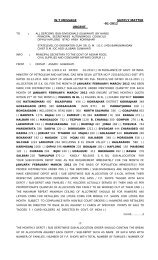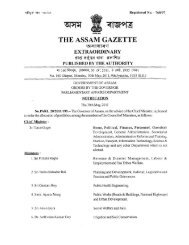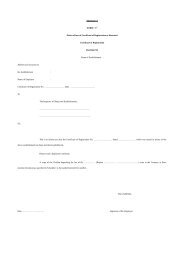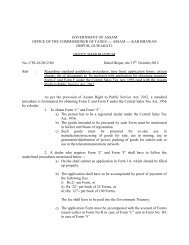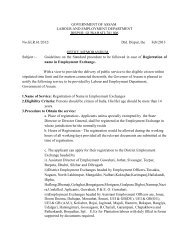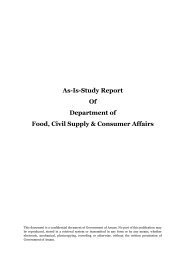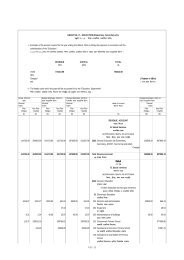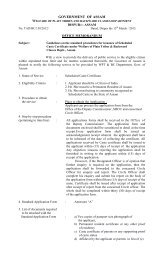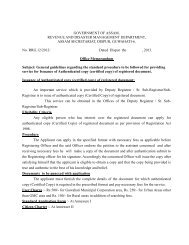public health engineering department - Assam Online Portal
public health engineering department - Assam Online Portal
public health engineering department - Assam Online Portal
Create successful ePaper yourself
Turn your PDF publications into a flip-book with our unique Google optimized e-Paper software.
As-Is and e-Readiness Study report on Public Health EngineeringDepartment, Govt. of <strong>Assam</strong>While implementing the National Rural Water Supply Schemes, the following norms aregenerally adopted for providing potable drinking water to the population:1. 40 litres per capita per day (lpcd) for humans to meet the following requirements.Purpose Quantity(LPCD)Drinking 3Cooking 5Bathing 15Washing utensils & house 7Ablution 102. In addition, provision should be allowed at 30 lpcd for animals in hot and colddesert/ecosystems in 227 blocks of 36 DDP districts..3. With normal output of 12 litres per minute, one handpump or standpost is estimated forevery 250 persons.In case of an independe habitation/hamlet/Wadi/Tola/Majra/Mohra etc,if their population is less than 250 persons and there is no potable water source within itslocation, one source may be provided.4. A rural habitation not having any safe water source with a permanently settledpopulation of 20 households or 100 persons, whichever is more, may be taken as the unitfor coverage with funds under the NRWSP. However, the State Government couldcover any habitation regardless of its size/population/number of households with fundsunder the State Plan.5. DDP areas and SC/ST habitations with less than 100 persons can, however,covered under the NRWSP.1. Backgroundb) Swajaldhara ProgrammeGroundwater used for freshwater drinking supplies can be easily over-exploited by othercompeting users like irrigation, industry, etc. When this happens it can becomecontaminated with salt water which makes it unsuitable for use. Water available in riversand lakes is sometimes polluted, making it harmful to plants, animals and people.Sustainability and safe sanitation practices are the forerunner for safe drinking watersupply.The paradigm shift in the new framework is to move towards achieving universal accessRef.: AEDC/AOP/EOI/2009/10 Copyright : AEDC Ltd. 29




